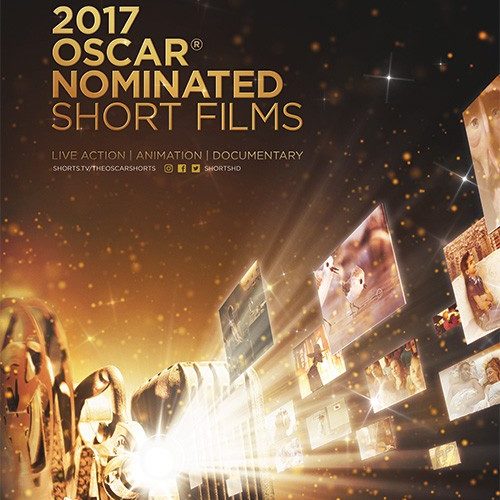Ahead of the Academy Awards, we’re reviewing each short category. See the Animation section below and the other shorts sections here.
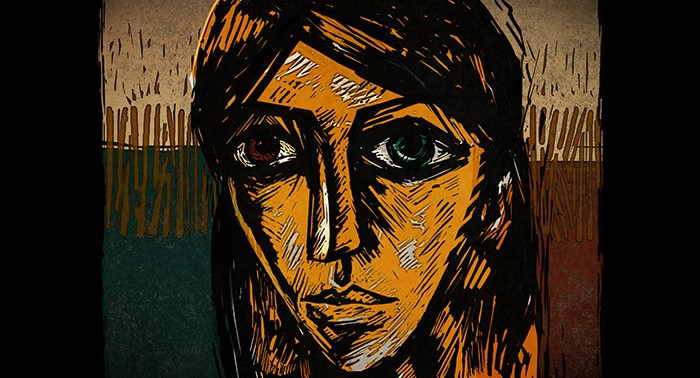
Blind Vaysha – Canada – 8 minutes
I did a double take upon hearing Theodore Ushev‘s name alongside his animated short Blind Vaysha during the Oscar nominations because I’ve watched his work progress the past five years. This Canadian by way of Bulgaria is a Toronto International Film Festival staple, a guy who alters his aesthetic with every new project. Whether rotoscoping, hybridizing Cubism and Constructivism, or dabbling in Abstract Expressionism, though, you always know it’s an Ushev film because of its content and craftsmanship. His latest is no different, the adoption of woodcutting lending an old school storybook feel to a tale that speaks towards today’s climate of hope and despair. Narrated by Caroline Dhavernas, Vaysha’s story begs us to open our eyes and see the world as it is — for better or worse.
Based on a short story by Georgi Gospodinov of a young girl born with one eye that sees the past and another the future, Blind Vaysha is rooted in nostalgia and fear. We yearn for what was and dread what’s next without acknowledging the life in front of us that’s both stronger for what came before and still able to learn so what’s coming won’t be so bad. This affliction proves a curse rather than gift, those seeking to find a cure her last chance at stopping potential suitors from simultaneously looking like babies and old men. Even in dream she only sees memories of youth and nightmares of death. Vaysha embodies our imperfect drive to better ourselves, one that only leads to added horrors in self-fulfilling prophecy.
Ushev brings her to life with wonderful visuals, each frame personal and unique. It’s a modern parable rendered ancient (or vice versa), a story culminating with a question posed to the audience once the narrative stops reading to speak directly at us. Which eye would you save? Which would you lose? Or is it better to remove both and live in the darkness their torture already wields to imprison our minds? It’s the perfect metaphor for the state of America as Trumpists crave a “greatness” of old they cannot define and Democrats stare blankly at the void of destruction lingering over the horizon. Sanity is only possible by looking at today because the past is complete and the future unwritten. All we have is right now.
A-
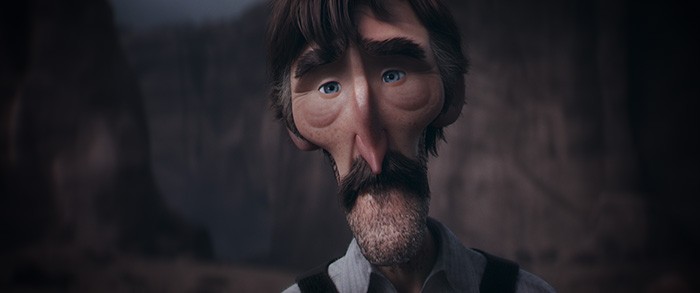
Borrowed Time – USA – 7 minutes
It’s been a dark year for animated films — dark with a subtle slice of hope for the future. My Life as a Zucchini leads the way on that front, but Borrowed Time is hardly an exception. Andrew Coats and Lou Hamou-Lhadj‘s stylized computer-animated short focuses on an aged Sheriff yet to forgive himself for an accident he was involved with years before as a boy. Everything that’s happened since hasn’t shaken the guilt, a life as a lawman upholding justice and order unable to even the scales. This is why he finds himself at that fateful scene again, the remnants still lying in the sand to preserve its tragedy. Every step forward brings another acute vision of the day his life changed forever.
Everything’s led to this moment. His career was dictated by what happened, but it wasn’t enough. His soul never recovered and after decades of trying he’s reached his breaking point. This is therefore the day he lets the cliff he survived win. This is the day he quiets the screams of agony he most certainly let out in the hours and years after it all went down. We flicker back and forth from past to present, the realization of what occurred growing clearer and yet never seeming to be as violent as it ultimately proves. What was a journey that brought needed joy and love quickly devolved into a fight for his life and it simply wasn’t possible to earn a happy ending.
But that doesn’t mean the filmmakers have sentenced this weathered sheriff to the same fate. No matter our despair or isolation, there’s also an opportunity to find a glimmer of positivity. Fate has a way of supplying us a sign — whether you call it coincidence or divine intervention. We all reach our cliff’s edge with two choices: to move along or lose ourselves forever. The profundity of how we reach our decision can be years in the making or hinge on the briefest second of light reflecting off a surface in the distance. No matter how bad an accident, intent is only truly ever questioned by those who live through it. What happened here wasn’t anyone’s fault, but asking forgiveness of oneself is never easy regardless.
B
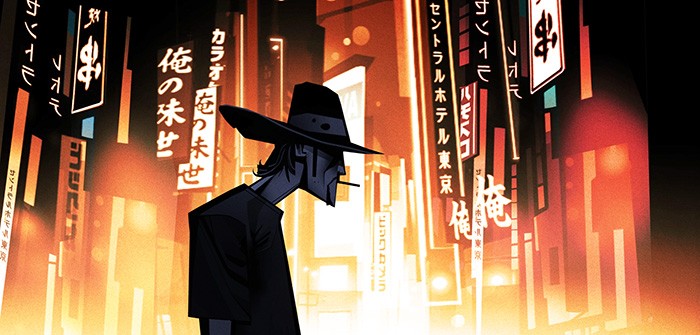
Pear Cider and Cigarettes – Canada/UK – 35 minutes
“He was born lucky and died unlucky.” These are the words Robert Valley uses to describe an old childhood friend named Techno Stypes, the subject of his twenty-five year autobiographical journey entitled Pear Cider and Cigarettes. From the youthful eyes of adulation, Techno was the fastest person alive and the coolest cat in Vancouver. He was good in sports, good with the ladies, and fearless when it came to living larger than any person should live. He became a millionaire after an injury settlement and even richer after a hospital screw-up. But in the end Techno became an emaciated, yellow-skinned drifter holed up in China awaiting a liver transplant. And with no one to fight for his wellbeing, Robert flies out to supervise one more wild adventure together.
You may not recognize Valley’s name, but you’ve surely seen his work. He animates virtual band Gorillaz, storyboarded Æon Flux, and worked on character design for Wonder Woman and TRON: Uprising. His aesthetic leans towards hyper-stylized bodies with fluid motion and thick contours, the atmosphere heavy with mystery and the action kinetic and sharply cut. It was only in his free time that he began working on Pear Cider as an ode to his fallen friend, first as a graphic novel under his Massive Swerve label and second as a short film. What makes this transition from page to screen so stunning, though, is that he did it in Photoshop (his Kickstarter even offered tutorials on how as reward). It’s literally an animated comic and it looks spectacular.
The artist narrates the story himself: beginning and ending with the death of Techno. What’s in between is the memory of this dude’s legend and the uncensored chaos that built his mythos even higher. Some of the best moments come in quick montage, glimpses at a greatest hits compilation of extreme action and stupidity. He includes heavy drinking, tons of smoking, a few curse words, and some nudity — so keep the kids at home — but it all plays into understanding who Techno was and who he wasn’t. It’s necessary to see why Valley distanced himself from the self-destruction and why he kept coming back out of love and friendship even if he knew Techno was going to pull a stunt that risked getting them all killed.
Underneath the craziness and laughter is a heartwarming story of what friendship means beyond years apart or diverting lifestyles. For most of the film Valley plays the role of police officer, watching Techno like a hawk to confiscate alcohol so they can swap out his liver and get back to North America. It’s not who Robert wants to be, but it’s who he needs to be to give his buddy a chance at life. And when we delve deeper into the psychological ramifications of Techno’s ego and lack of boundaries, we witness just what Valley means to him removed from the tough exterior and unflappable façade. We’re taken on a full-speed ride to Hell and back, each laugh and tear an authentic demarcation of an unforgettable life.
B+
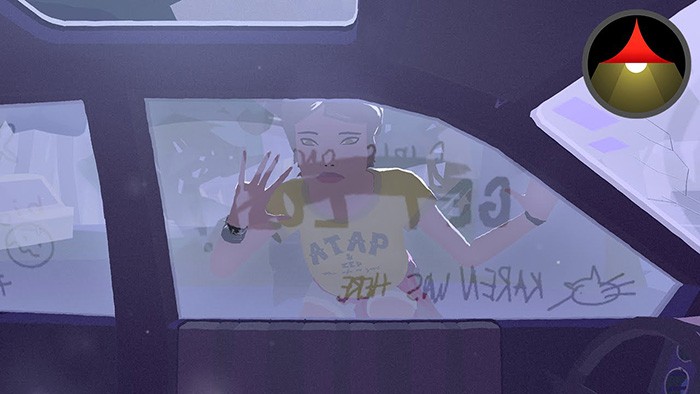
Pearl – USA – 6 minutes
It shouldn’t come as a surprise that the director of Pearl is also the man behind Oscar-winning Disney short Feast. Patrick Osborne for all intents and purposes has merely updated that previous look at a dog experiencing the tumultuousness of humanity around him to one capturing the bond between a father and a daughter as time turns love into a struggle before ultimately coming back full circle post-adolescence. The camera is again virtually set in one place, but it’s affixed to a locale rather than a character. And the whole is also set to a single song, the dialogue fading into the background so the power of lyrics passed down generation to generation can rise up and fill our hearts with the warmth of life.
While the simplicity of story’s progression remains consistent, however, the execution on this latest work brings it to a whole other playing field. This leap in technological advancement propels Pearl into the land of VR — making it the first of the format to be nominated for an Academy Award. We therefore become the camera, a stationary pivot point in the middle of the main characters’ hatchback so our heads can be on a constant swivel to see every angle. I don’t own a device necessary to watch it as intended, but luckily Google and YouTube have made it so you can grab the screen and spin it to your whim regardless. So as the song plays and time advances forward and in reverse, we see everything.
The journey demands your involvement as leaving the camera at a two-thirds angle to view the driver’s seat and backseat only is a disservice. Characters constantly move so that you must follow them around the car (when someone runs out), through the sunroof (to catch a firefly), or out the back as the red and blue glow of a police car flickers. And as the vehicle ages, so too does Sara (Nicki Bluhm) and her Dad (Kelley Stoltz). One matures to leave a life of peace-loving music behind as the other embraces those same ideals in a rock and roll world. The car becomes a symbol of their family, a piece of them both to cherish and never forget. Home isn’t where you are, but whom you’re with.
Note: the version playing in theaters has been adjusted by the filmmakers to eschew the VR-format for a curated cinematographic experience to see what needs to be seen.
A-
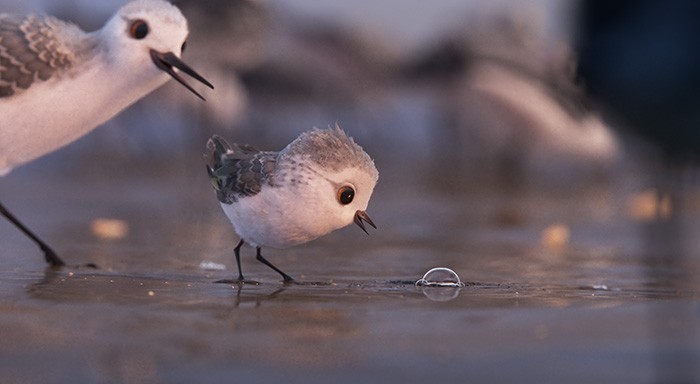
Piper – USA – 6 minutes
It’s really quite amazing how consistent Disney/Pixar is at telling six-minute long, vibrantly rich stories without words. Each year passes with a new one arriving to build upon the last, sometimes embracing the “fun” side of things and sometimes as an expression of love. I’d put Alan Barillaro‘s Piper in the former category as its titular sandpiper has plenty of the latter with a loving mother coaxing her baby from the brush. Mom shuffles down to the shoreline, plucking a seed from the sand to show her child from afar. And when Piper defaults to looking up, mouth agape Mom remains steadfastly still. It’s time for the young one to fend for itself. It’s time for Piper to realize the world isn’t as scary as it may seem.
The only way to do so is often by acknowledging how scary the world truly is. So when the tide comes and everyone scatters, Piper unwittingly remains to be blasted by the water. The trauma is too much to endure, the tiny bird staying hidden away until a clan of hermit crabs shows it that there’s nothing to fear. They’re much tinier and yet they approach the water with a second thought, letting it wash over them. They do it not because they don’t know better, their motivations are premeditated and a key to survival. All of Piper’s brethren run away as the waves approach, but these minuscule critters simply hunker down and stand their ground. If it works for hermit crabs it should work for sandpipers too.
Barillaro drew up with the idea watching the birds engage in their natural dance outside Pixar’s Emeryville, CA studios. This aspect is effective: the comedy, coming-of-age drama, and resonate universality of discovering the unknown. It’s extremely cute and exciting, a new world of riches exposing itself just as fear subsides in Piper’s attempt to combat it. But while such a minimalistic plot bolstered by the strength of its delivery touches young and old alike, the real draw for me is the astonishing animation. The sand is composed of individual granules moved by bird feet, the water rendered with a liquidity appearing true to life. The characters are obviously personified and yet you’d easily believe Barillaro if he told you everything was real. The uncanny valley is gradually disappearing.
B+
The Oscar Nominated Shorts are in limited theatrical release starting February 8th. See the official site for more details and our reviews of the other shorts sections here.

